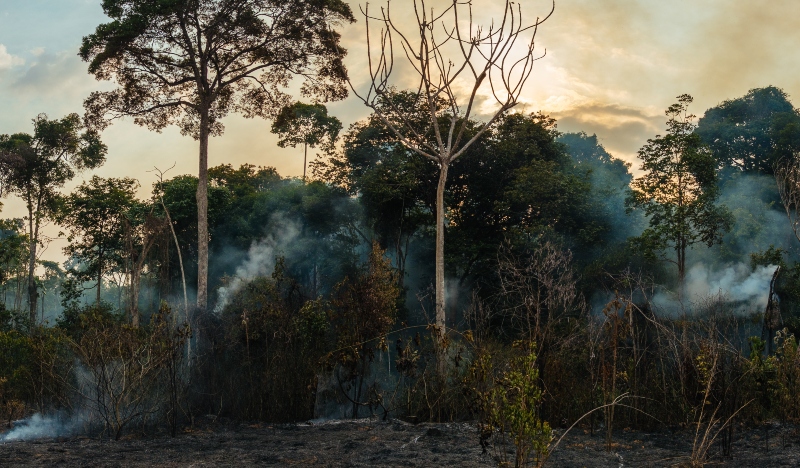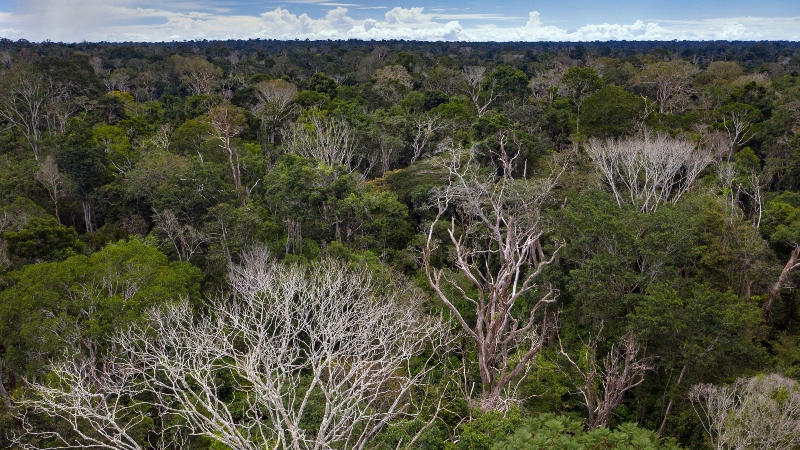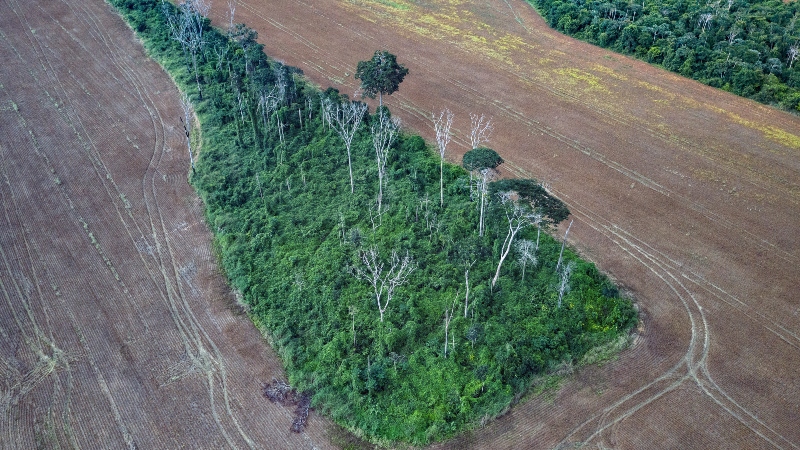Study shows that degradation has affected over a third of the Amazon rainforest
Study shows that degradation has affected over a third of the Amazon rainforest
Photo: Adam Ronan

Fire is a factor in forest degradation. Picture taken in 2015 of forest burning in Belterra, Pará, Brazil.
Out of the entire existing Amazon forest area, about 38% suffers from some kind of degradation due to fires, illegal logging, edge effect, and severe droughts. The finding is in a paper signed by scientists from national and international institutions, published on Friday (27), on the journal Science magazine.
The study “The drivers and impacts of Amazon forest degradation” considered four main factors of forest degradation caused by human action: forest fires, edge effects (the changes that happen in forest areas next to areas that were deforested for agriculture or other purposes), timber extraction (illegal deforestation) and extreme droughts. The conclusion was that such factors have already compromised over a third (38%) of all the forest cover that still remains in the Amazon region.
| Degradation involves transient or long-term anthropogenic changes in forest conditions. Unlike deforestation, where the vegetation is suppressed and the forest ceases to be forest, in degradation the vegetation remains in the area, but at different stages of degeneration, with loss of biodiversity and negative impact on the provision of environmental services. |
To obtain the results, the authors made an analytical review of scientific data based on satellite images and previously published field data on changes in the Amazon region in the period 2001-2018. The work is authored by 35 researchers from institutions such as the State university of Campinas (Unicamp), Empresa Brasileira de Pesquisa Agropecuária (Embrapa),Amazon Environmental Research Institute (IPAM), National Institute of Spatial Research (Inpe), in Brazil, and Lancaster University, in the United Kingdom, among others.
MapBiomas data show that in the 2001-2018 period, the deforested area in the Amazon was 326,000 km² and the area degraded by fire, logging and edge effect totalled 365,000 km². “Despite the uncertainty about the full effect of such disturbances, it is clear that the effect of degradation could be as important as deforestation for carbon emissions and biodiversity loss,” says Jos Barlow, a researcher at Lancaster University and co-author of the study.

The white canopies are from trees killed in a fire that occurred in 2015 in a protected area in the town limits of Belterra, Pará. Photo: Marizilda Cruppe/Sustainable Amazon Network
Effects that go beyond the climate
The study points that degradation has effects that go beyond the climate – with equivalent or more greenhouse gas emissions than deforestation – and the loss of biodiversity. It has socioeconomic impacts on populations, affecting income, food, health, quality of life and the culture of those who live in the region. “Degradation favors few, but burdens many,” states David Lapola, a researcher at Unicamp's Center for Meteorological and Climate Research Applied to Agriculture (Cepagri) and leader of the study.
“One of the differentials of this study was to associate degradation with other issues that go beyond the material use of the forest, such as timber, hunting, and income generation. Degradation has impact on the relationship that populations have with the forest, on quality of life, migration, education, public health and cultural identity,” states Joice Ferreira, a researcher at Embrapa Eastern Amazon and co-author of the study. For the authors, such impacts should be further investigated in the future.

Forest fragment in Belterra, Pará, affected by fire, logging and edge effects. Photo: Marizilda Cruppe/Sustainable Amazon Network
Monitoring and efficient agriculture
In a projection the team made for 2050, the four degradation factors will continue to be the main sources of carbon emissions into the atmosphere, regardless whether forest deforestation ceases or grows.
Agriculture plays an important role in reducing the advance of deforestation and subsequent degradation. “The fragmented forest areas bordering agricultural areas suffer from the edge effect, and the use of slash and burn farming is also a degradation factor,” explains the Embrapa researcher.
For Ferreira, it is fundamental to apply previously generated agricultural knowledge with spatial planning, using fewer areas with higher productivity and efficiency, combined with adequate management and reducing fires in agricultural areas.
Among the proposals the authors put forth in the study is the creation of a degradation monitoring system, in addition to preventing and inhibiting illegal logging and controlling the use of slash and burn agriculture. One of the suggestions is the concept of “smart forests” that, similarly to the concept of “smart cities”, would use different types of technologies and sensors to collect useful data to improve the quality of the environment.
Ana Laura Lima (MTb 1268/PA)
Embrapa Eastern Amazon
Press inquiries
amazonia-oriental.imprensa@embrapa.br
Phone number: +55 91 3204-1060 / 99110-5115
Translation: Mariana Medeiros (13044/DF)
Superintendency of Communications
Further information on the topic
Citizen Attention Service (SAC)
www.embrapa.br/contact-us/sac/
